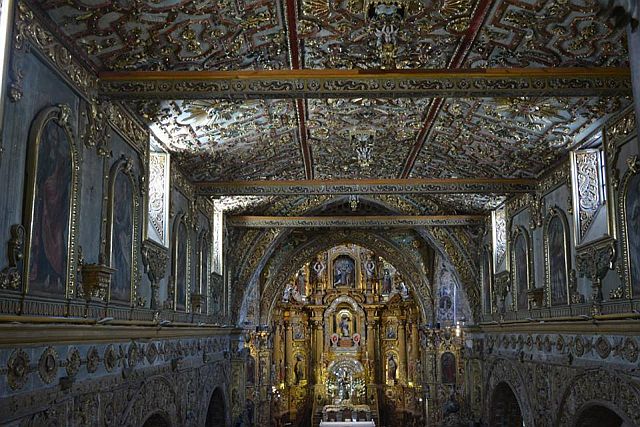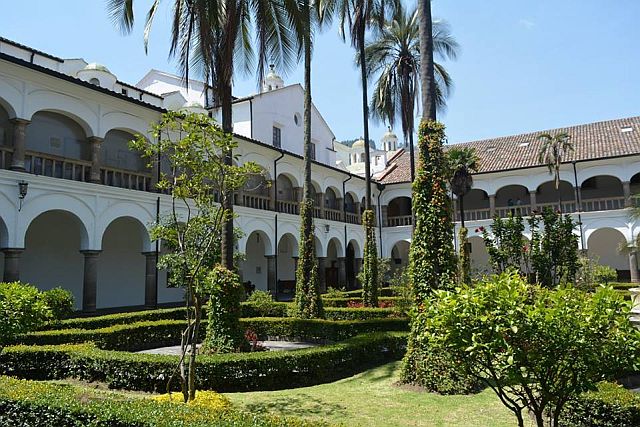
The 17th Century Chapel inside the Carmelite Monastery
WINTER is not exactly the best time to be in the United States. That is why many Americans head to other places during this time, to escape the “wrath” of the season.
I for one feel this way, so after all the Christmas activities at my parishes in West Virginia, I left the US on Jan. 23, along with a bunch of pilgrims to visit holy and secular sites in Ecuador, one of the beautiful countries in South America.
Many people in the US, myself included, have the wrong impression about this former Spanish colony: that it’s a haven for “bad elements.” You will be proven wrong as soon as you set foot on its soil. One of the 13 countries that lie on the earth’s equator, Ecuador, has a rich colonial, religious, cultural, and architectural jewels waiting for us to see, experience and appreciate.

Carmelite Monastery
On my visit, I realized that there are a lot of things to love about Ecuador, like how most of its people lead simple lives and the seeming innocence of their speech and actions. The manner by which they carry out conversations suggest inner peace and harmony.
I also found out that life in Ecuador is not far from our ways in the Philippines. For one, Ecuadorians and Filipinos have a deep religious conviction that guides them every day, especially in times of calamity or even in the midst of abject poverty.
How Ecuadorians give importance to their family is comparable to Filipinos devoting time and effort to keep family values intact.
Four days of exploring Ecuador, and the effect of high altitude hit me: headache! The tourist guide advised our group to drink water frequently as a way to combat a headache, to no avail.
After all, we were on top of the mountains, 9,350 feet above sea level.

The group of pilgrims from the US posing at the balcony of their hotel in Quito, Ecuador
But this did not stop me from discovering more of Ecuador, particularly the 16th century founding of the Ciudad de San Francisco de Quito by
the Spanish conquistador Benalcazar. Within the city there are severaantique churches located almost right next to each other. The highlight of our visit was the 17th Century Archbishop Palace and the Monastery of Our Lady of Good Success. Seeing the upper choir loft of that monastery where the Blessed Virgin Mary supposedly appeared to Mother Mariana and the incorrupt body of the founding mother was a profound moment for us. Here we prayed the Holy Rosary.
The following day, we continued our pilgrimage to the Footsteps of La Dolorosa, the Church of El Sagrario, then to the 17th Century Jesuit complex of La Campania. There were many places to visit that day, including the Cathedral of Quito, the Monastery of Santo Domingo, the Monastery of Santa Catalina (where the saint’s body was hidden for 100 years), the Plaza Grande,the Presidential Palace (where we learned about the life of the great Catholic President of Ecuador, Gabriel Garcia Moreno), and the mountaintop of Panecillo and the grotto of the Virgin of the Apocalypse offering a spectacular view of the City of Quito. Quito, Ecuador is blessed with an annual financial support from the UNESCO as one of the world’s wonderful
heritage sites.
